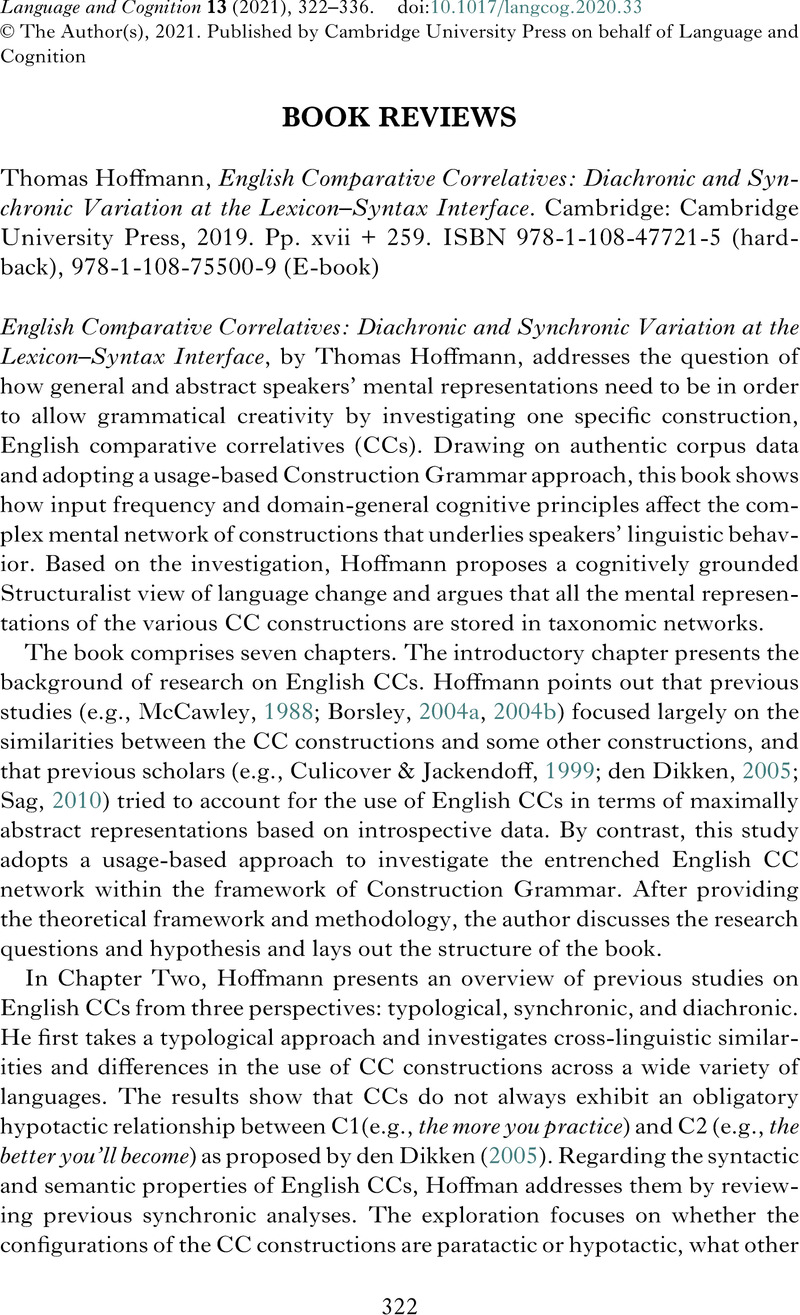No CrossRef data available.
Article contents
Thomas Hoffmann, English Comparative Correlatives: Diachronic and Synchronic Variation at the Lexicon–Syntax Interface. Cambridge: Cambridge University Press, 2019. Pp. xvii + 259. ISBN 978-1-108-47721-5 (hardback), 978-1-108-75500-9 (E-book)
Review products
Thomas Hoffmann, English Comparative Correlatives: Diachronic and Synchronic Variation at the Lexicon–Syntax Interface. Cambridge: Cambridge University Press, 2019. Pp. xvii + 259. ISBN 978-1-108-47721-5 (hardback), 978-1-108-75500-9 (E-book)
Published online by Cambridge University Press: 16 November 2020
Abstract
An abstract is not available for this content so a preview has been provided. Please use the Get access link above for information on how to access this content.

- Type
- Book Review
- Information
- Copyright
- © The Author(s), 2021. Published by Cambridge University Press on behalf of Language and Cognition
References
references
Borsley, R. D. (2004a). On the periphery: comparative correlatives in Polish and English. Proceedings of Formal Approaches to Slavic Linguistics 12, 59–90.Google Scholar
Borsley, R. D. (2004b). An approach to English comparative correlatives. In Müller, S. (ed.) Proceedings of the 11th International Conference on Head-Driven Phrase Structure Grammar (pp. 70–92). Stanford, CA: CSLI Publications.Google Scholar
Culicover, P. W. & Jackendoff, R. (1999). The view from the periphery: the English comparative correlative. Linguistic Inquiry 30, 543–571.CrossRefGoogle Scholar
den Dikken, M. (2005). Comparative correlatives comparatively. Linguistic Inquiry 36, 497–532.CrossRefGoogle Scholar
Hawkins, J. A. (2004). Efficiency and complexity in grammars. Oxford: Oxford University Press.CrossRefGoogle Scholar
Hoffmann, T. & Trousdale, G. (2011). Variation, change and constructions in English. Cognitive Linguistics 22(1), 1–24.CrossRefGoogle Scholar
McCawley, J. D. (1988). The comparative conditional construction in English, German, and Chinese. Berkeley Linguistics Society 14, 176–187.CrossRefGoogle Scholar
Schneider, E. W. (2007). Postcolonial English: varieties around the world. Cambridge: Cambridge University Press.CrossRefGoogle Scholar



